This Spanish latte recipe is a take on the classic café con leche drink that Spaniards often quaff during breakfast. Made with less milk than a typical latte, this drink has a forward coffee flavour and the use of condensed milk, to sweeten it, is simply sublime.
Why not serve a little slice of espresso brownie alongside it?
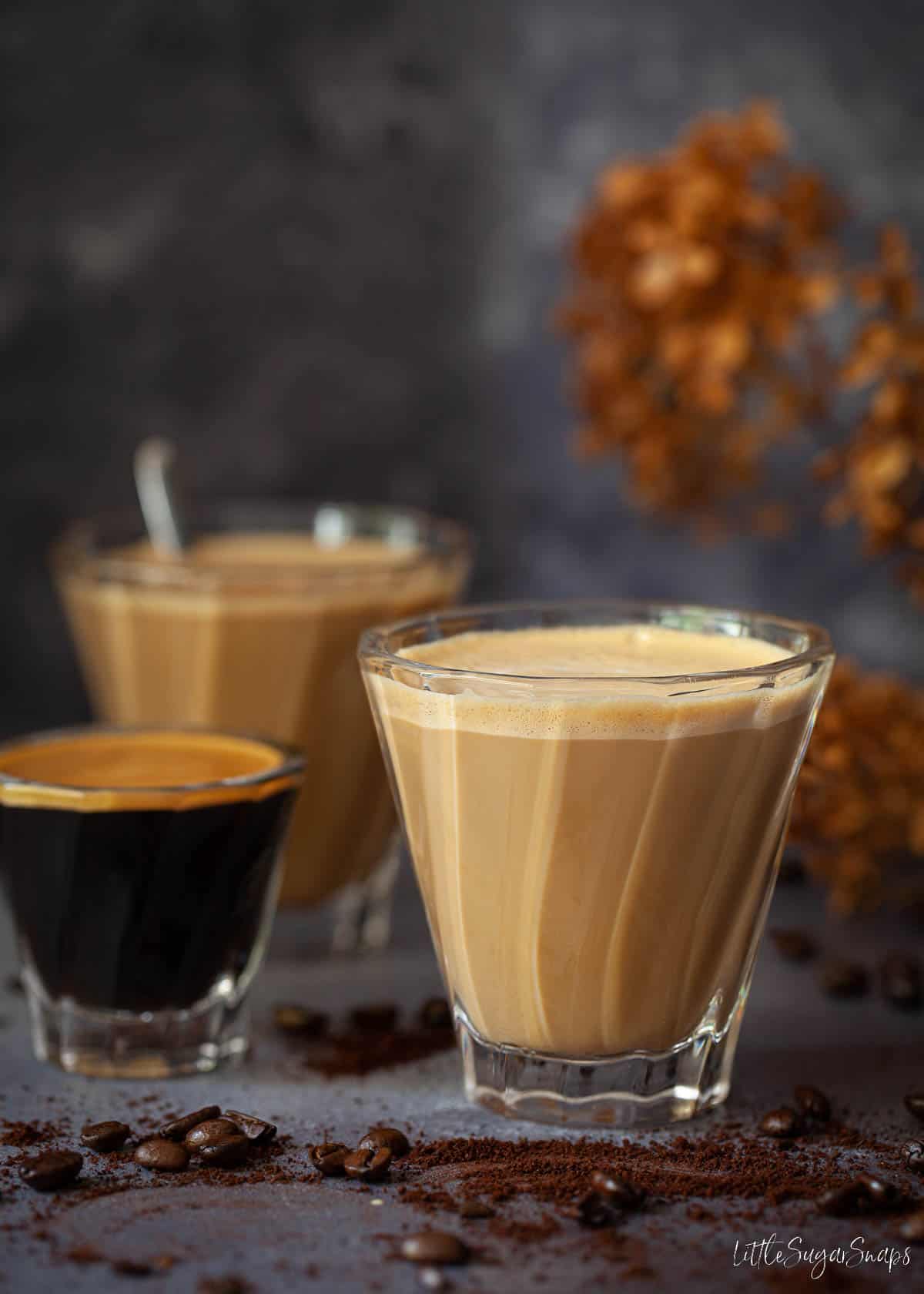
Want to Save This Recipe?
If, like me, you veer towards lattes and a delicate hint of sweetness to feed your coffee habit, then you’ll most likely adore this Spanish latte recipe. The beauty of this drink is that the sweetness level can so easily be tempered to suit your own personal tastes. Oh, and the recipe is also easy to adapt to make an iced Spanish latte for liquid refreshment on hot days.
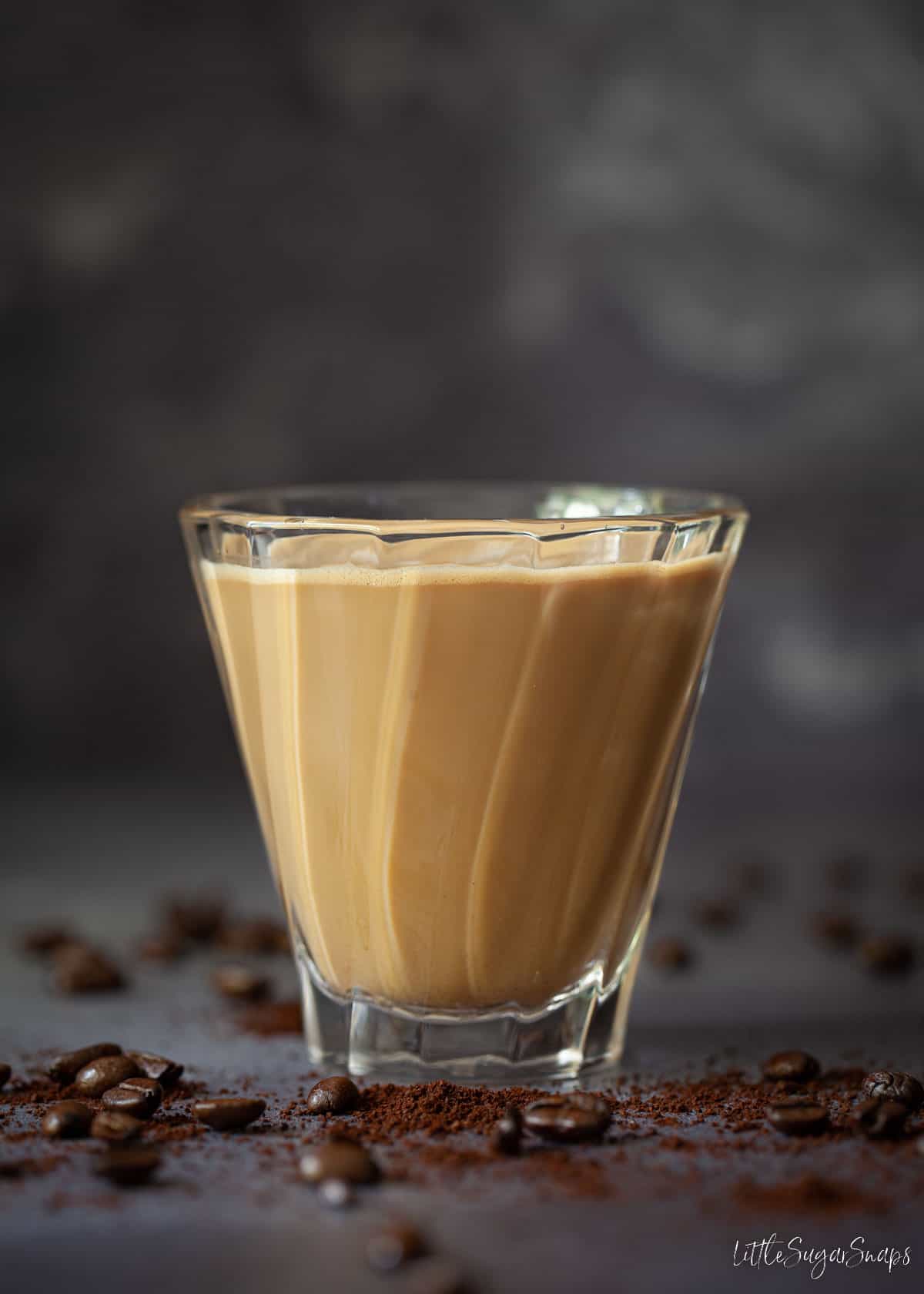
I also love using coffee in baking recipes and alcohol-based drinks. Try my coffee-flavoured cake or classic Italian tiramisu. As well as Baileys espresso martini I also recommend you try my warm & cosy coconut rum coffee.
Why you will enjoy this drink
Here’s a handful of reasons to make this Spanish latte recipe:
- Taste: The coffee flavour is bold as the ratio of coffee to milk is approximately 1:1 whereas the typical latte ratio is 1:2 (i.e. ⅓ coffee and ⅔ milk).
- Texture: Lusciously smooth & creamy due to combining the coffee with condensed milk.
- Subtle sweetness: This drink is not as sweet as perhaps a vanilla or caramel latte flavoured with syrups (unless an outlandish amount of condensed milk is added).
- Customisable: The exact level of sweetness can be varied according to the preference of the individual coffee drinker. Just add more/ less condensed milk or forego it altogether for a classic café con leche.
- Lower calorie: As far as sweetened, milky coffee drinks go, this one is not too high on the calorie front.
All-in-all, a café con leche sweetened with a touch of condensed milk is a great option for coffee lovers who like to include frivolity with their daily cup of Joe. Try serving it with one of my chocolate chip coffee cookies alongside.
And talking of fun with coffee, have you spotted my Biscoff latte and honey latte recipes yet? I’m still crushing hard on them both.
What is Spanish latte?
A Spanish latte is a riff on the coffee drink referred to as a café con leche in Spain, which translates as coffee with milk. Apparently, if you’re in Spain and ask for a Spanish latte the barista will have no idea what you are trying to order. So be wise and stick with the local terminology instead.
Anyway, language technicalities aside, a café con leche in Spain is a blend of strong espresso coffee and scalded (or steamed) milk in roughly equal measures. If sweetener is added, it will be sugar.
Outside of Spain, it’s common to use a little condensed milk to sweeten the café con leche instead, giving rise to the coffee drink I’m presenting today.
Ingredients notes
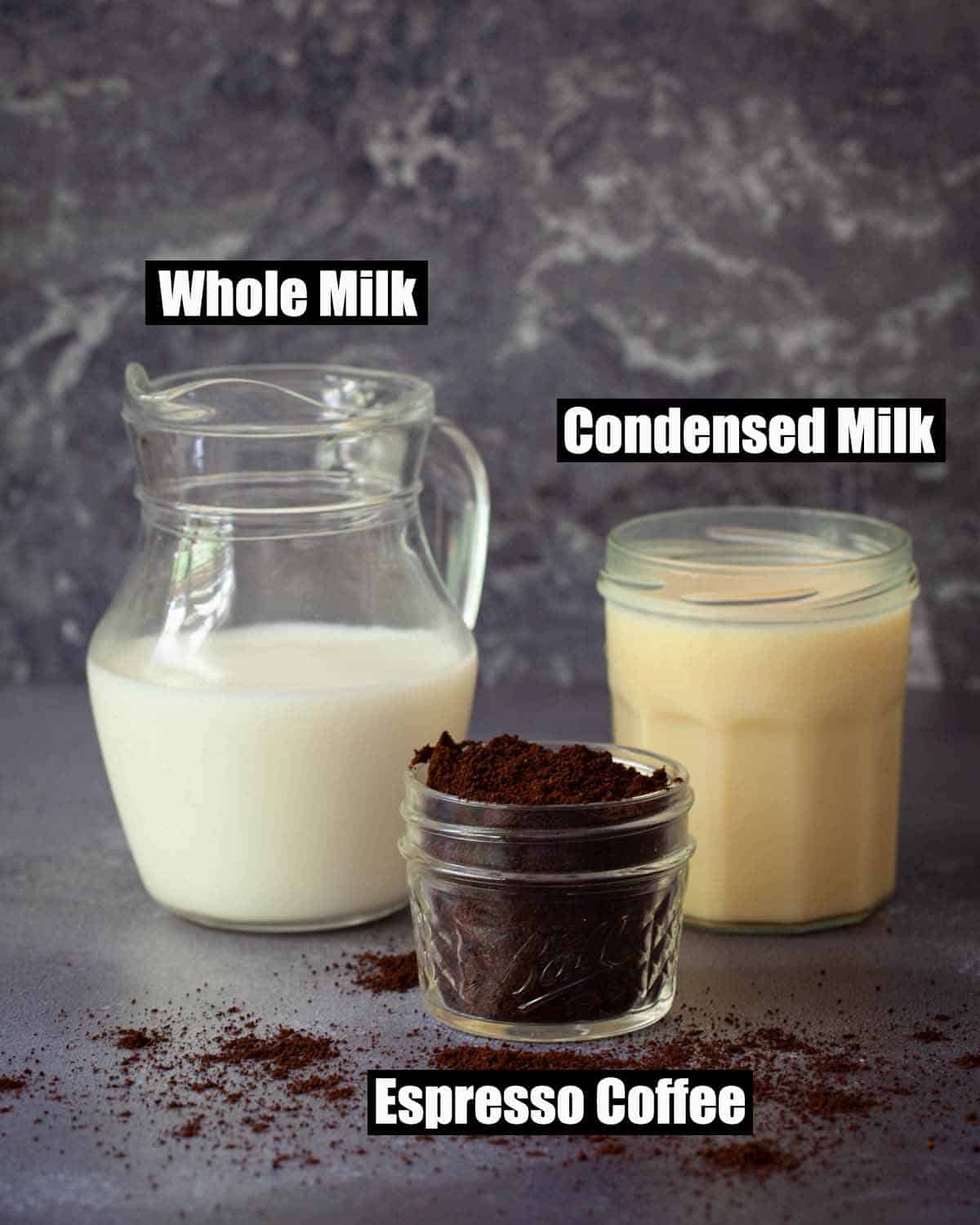
With only 3 ingredients needed to make this café con leche drink, it’s imperative to use the best ingredients you can afford (I’m thinking about the coffee in particular).
Espresso coffee: always use quality espresso coffee when making a café con leche as the coffee flavour in this drink is pronounced. Spanish espresso coffee, freshly ground from the bean, is the ideal selection, but failing that any decent ground espresso coffee will suffice.
Milk: whole (full-fat) milk is my preferred option here as it has a great level of creaminess about it which gives the milk its great taste.
You can swap this for semi-skimmed milk to cut fat and calories, if desired, but I don’t recommend using skimmed milk. There’s just not enough flavour or creaminess about it to make it a worthy ingredient for a Spanish latte.
Condensed Milk: this is cow’s milk that has had water removed from it and (typically) sweetener added to it. This ingredient is commonly used in baking to make goodies such as millionaires shortbread. But the rich, creamy and sweet taste of it makes condensed milk a great addition to drinks. Pick it up either in a tin or in a handy squeezable container that can be stored in the fridge once opened.
Step by step instructions
Making this recipe for coffee with condensed milk is a quick and easy process. It takes around 5 minutes:
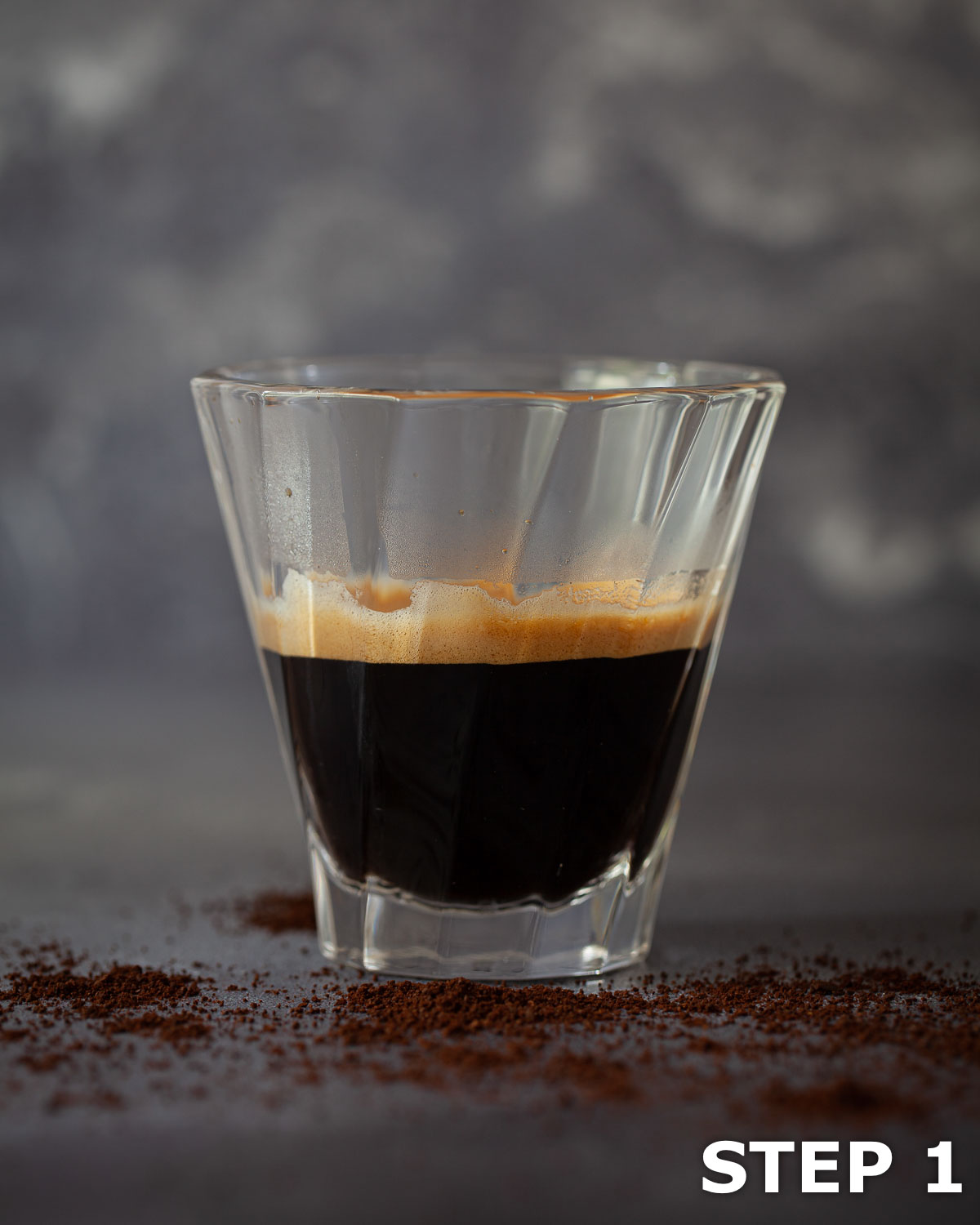
- Step 1: Brew the coffee and pour into as warmed heatproof glass or small coffee cup.
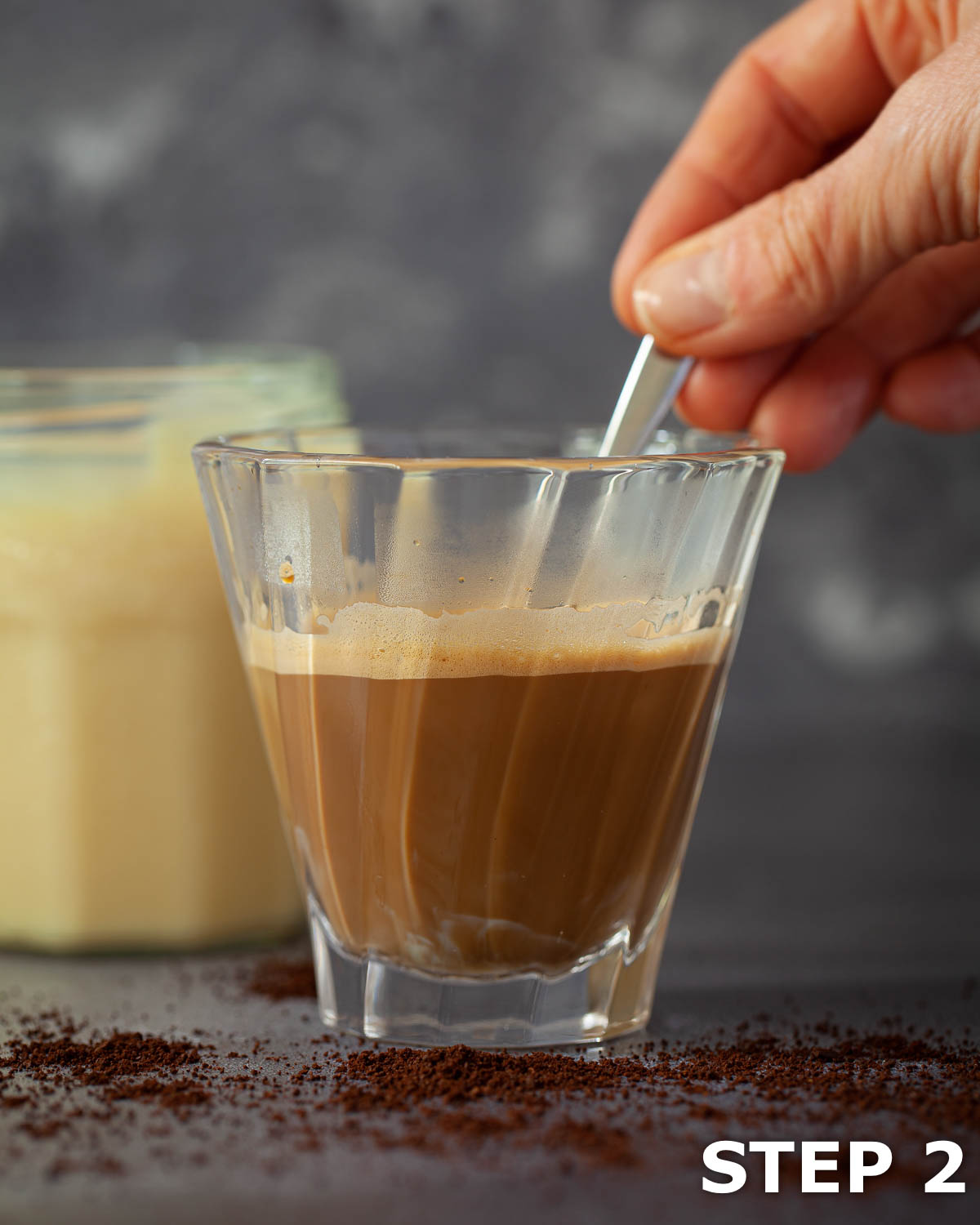
- Step 2: Put a tablespoon of sweetened condensed milk into the glass and stir until it has dissolved.
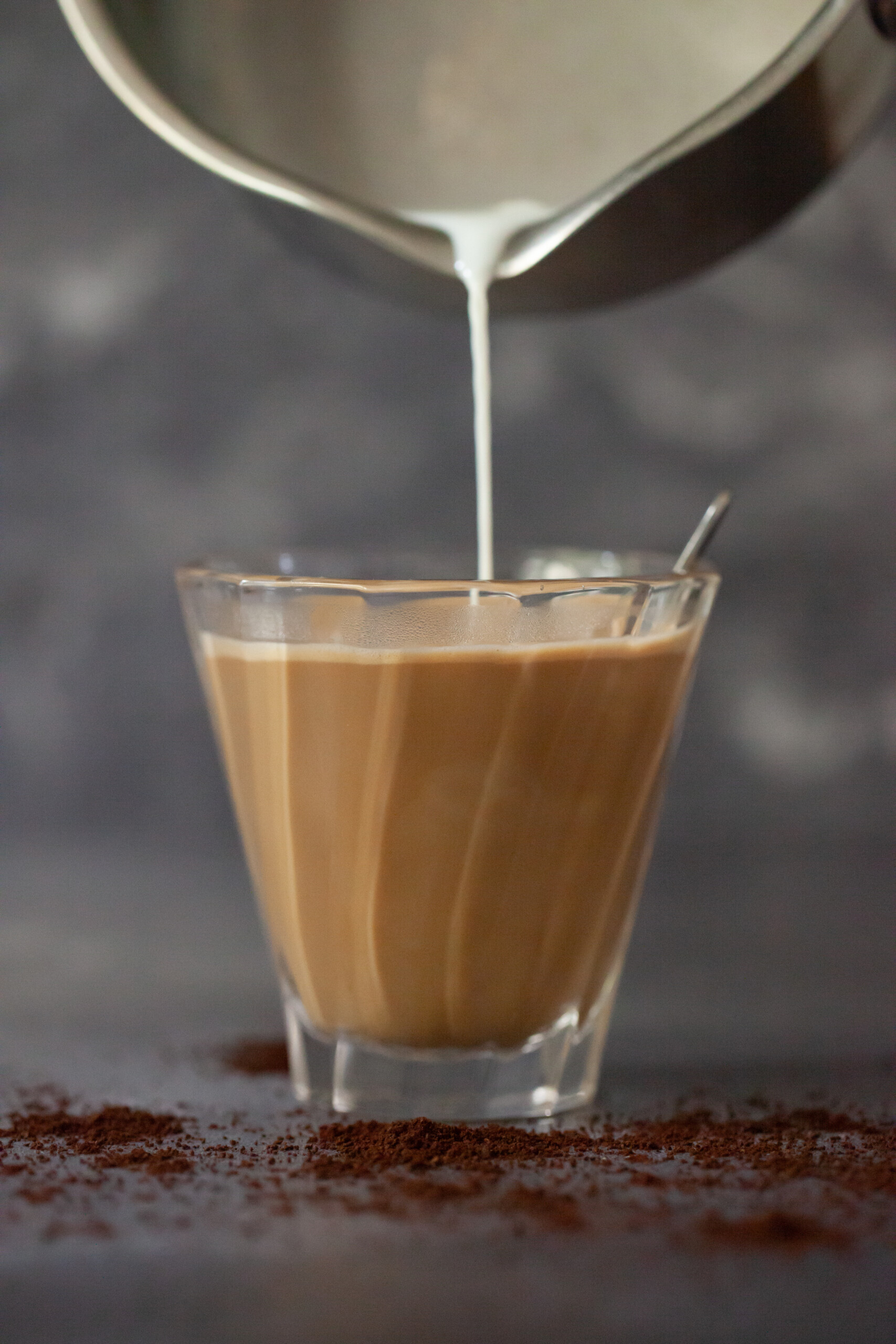
- Step 3: Heat the milk to scalding in a small pan, swirling every 15 seconds to prevent it from burning on the bottom of the pan. Use a probe thermometer to keep track of the temperature and remove the pan from the heat when the milk reaches 83C/ 181F. Pour the scalded milk into the coffee and enjoy immediately.
Expert tips
This is a very straight-forward drink to make but here are a handful of tips to get the best out of this Spanish latte recipe:
- Make sure that you brew strong espresso. This is not the drink to play shyly with the punchy coffee flavour. I use 24g ground espresso to produce 90ml of coffee.
- Do heat your serving glass/ cup by filling it with hot water as you make the drink. This helps ensure that your latte is served at a great temperature.
- Do measure the condensed milk and be prepared to adjust the amount used in accordance with your own taste preferences. I’m all for vaguely sweet coffee rather than in-your-face sweetness, so 1 ½ tablespoons is ideal for me. Hardcore coffee enthusiasts may prefer to halve this amount. And those who find themselves lovestruck for very sweet drinks may like to double the amount used.
- Fancy some latte art? It’s fine to foam the milk. Your drink will be slightly less hot but the joyfully artistic foamy top will easily compensate.
Frequently asked questions
The simplest way to brew espresso is with a coffee machine. They are not all expensive. In fact, I have a Beko that serves the purpose adequately.
If you do not own a coffee machine then try brewing your espresso manually using an Aeropress, a moka pot or a cafetiere (French press).
No, it is not. Vietnamese coffee is usually served over ice and it does not include regular milk. Instead, it is typically made from a blend of black coffee and condensed milk. It’s usual for quite a large proportion of condensed milk to be used, so Vietnamese coffee is often a lot sweeter than the drink produced using this Spanish latte recipe.
Scalded milk is milk that has been heated to 83C/ 181F. Cooking the milk to this point reduces some of the sweetness naturally present in the milk.
Note that scalded milk is hotter than steamed milk which is more typically used in latte drinks. Scalded milk is also used to make a French café au lait.
Incidentally, although scalded milk is frequently cited as the one to use when making a Spanish latte, some baristas dispute this, instead preferring to steam the milk to 65C/ 140F. Their reasoning is that this protects the sweet flavour of the milk and means that the latte is the ideal drinking temperature when made.
Easy. To make a vegan version of this Spanish latte simply swap the cow’s milk for almond milk or oat milk and use vegan condensed milk. Job done!
That’s entirely your choice. I, personally, think that café con leche is perfect just as it is but I’m not into telling anybody how to serve their coffee.
Want to add cream? Go for it. Top with cinnamon? That’s a fantastic notion. How about a dusting of cocoa powder? Why not.
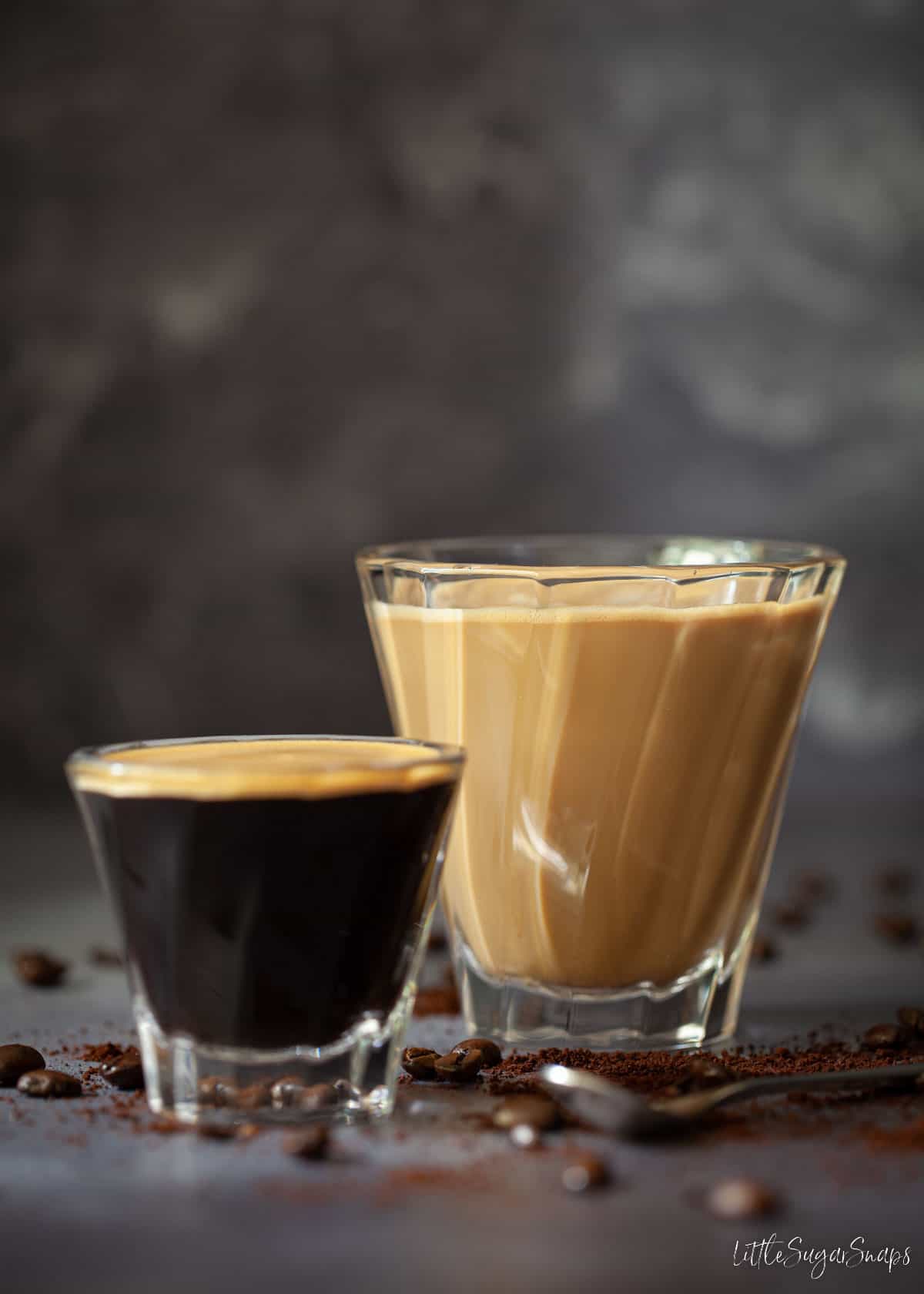
Variation: iced Spanish latte
Do you struggle to fully enjoy your daily coffee fix on hot days? Then swap your warm and toasty mug for a deliciously cold one instead. An iced Spanish latte is a great option for summer.
Simply prepare your espresso coffee as instructed in the recipe and stir the condensed milk in. Now pour this sweet coffee into a tumbler filled with ice cubes and top up with the cold milk of your choice. Use equal amounts of coffee and milk to keep the latte ratio at 1:1
More coffee drinks to try out
Have you made this Spanish latte recipe? Please do leave a comment or rating – it really does help other readers know that they can trust my recipes when they see comments from fellow readers.
New here? Why not sign up to receive LittleSugarSnaps newsletters. You’ll hear first-hand when new recipes are published. You’re welcome to stay in touch on Facebook, Instagram and Pinterest too.
📖 Recipe
Want to Save This Recipe?
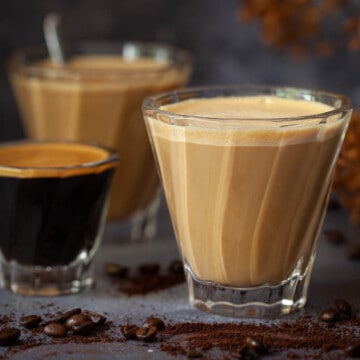
Spanish Latte (Café con Leche)
Equipment
- A coffee machine, Aeropress, moka pot or cafetiere (French press) to brew the coffee
Ingredients
- 90 ml Espresso (3x 30ml shots each made with 8g ground espresso)
- 90 ml Milk
- 1½ tablespoons Condensed milk use less/ more to taste
Instructions
- Pour hot water into 2 coffee glasses to warm.
- Heat the milk in a small pan, swirling every 15 seconds to prevent it from burning on the bottom of the pan. Use a probe thermometer to keep track of the temperature and remove the pan from the heat when the milk reaches 83C/ 181F.
- Brew the coffee.
- Optional: froth the milk using a milk frother or a stick blender.
- Empty the coffee glasses then share the brewed espresso between them.
- Put a tablespoon of condensed milk into each glass and stir until melted.
- Top with the scalded milk and enjoy immediately.
Notes
- Make sure that you brew strong espresso. This is not the drink to play shyly with the punchy coffee flavour.
- The simplest way to brew espresso is with a coffee machine. They are not all expensive. In fact, I have a Beko that serves the purpose adequately.
- If you do not own a coffee machine then try brewing your espresso manually using an Aeropress, a moka pot or a cafetiere (French press).
- Do heat your serving glass/ cup by filling it with hot water as you make the drink. This helps ensure that your latte is served at a great temperature.
- Do measure the condensed milk and be prepared to adjust the amount used in accordance with your own taste preferences. I’m all for vaguely sweet coffee rather than in-your-face sweetness, so 1 ½ tablespoons is ideal for me. Hardcore coffee enthusiasts may prefer to halve this amount. And those who find themselves lovestruck for very sweet drinks may like to double the amount used.
- Fancy some latte art? It’s fine to foam the milk. Your drink will be slightly less hot but the joyfully artistic foamy top will easily compensate.
- To make a vegan version of this Spanish latte simply swap the cow’s milk for almond milk or oat milk and use vegan condensed milk. Job done!
- Want to add cream? Go for it. Top with cinnamon? That’s a fantastic notion. How about a dusting of cocoa powder? Why not.

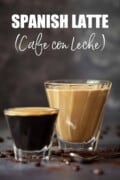
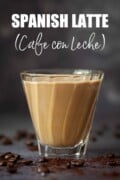

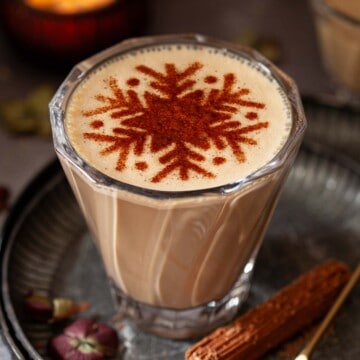
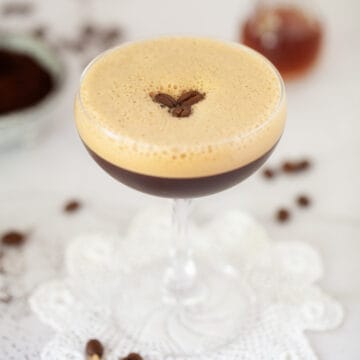
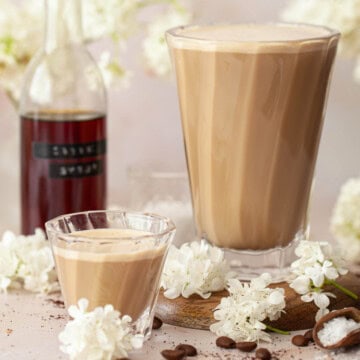
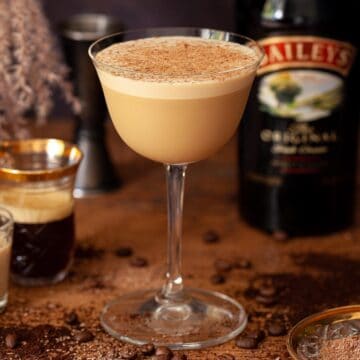
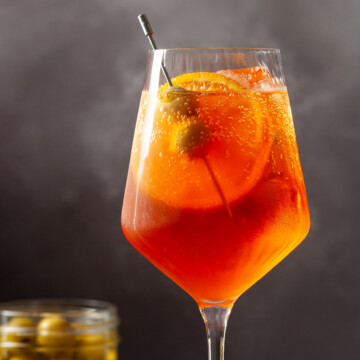
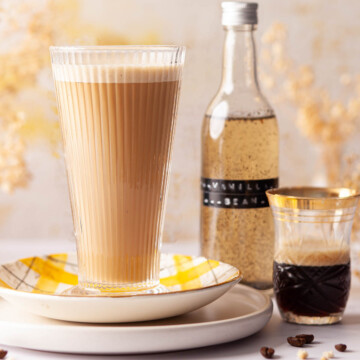
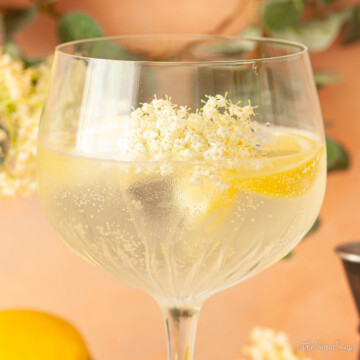
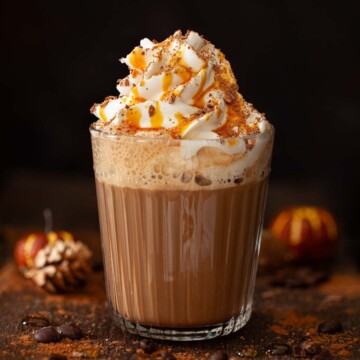
Jane Coupland
I hope you enjoy this recipe. Have it warm or ice cold and don’t forget to tailor the sweetness to your own preference.